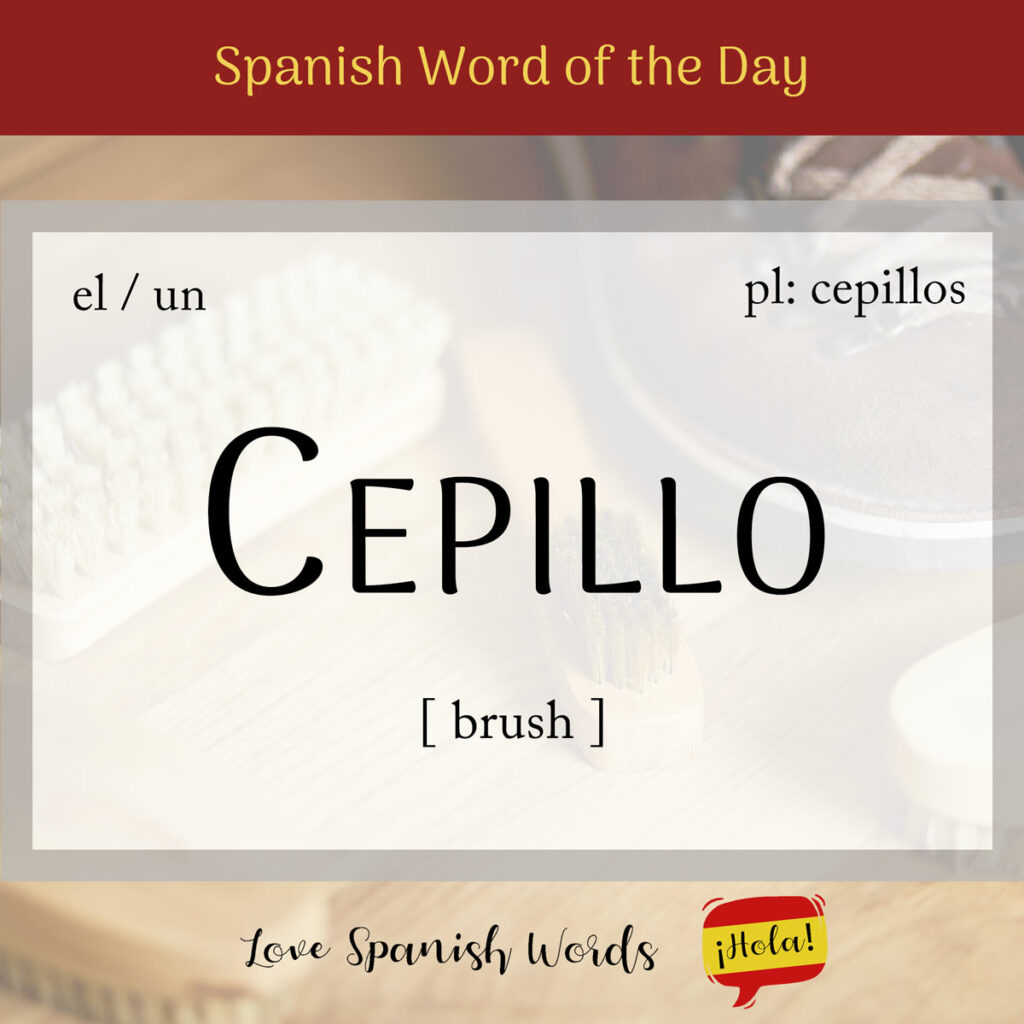In Spanish, any tool with bristles used for brushing hair or cleaning is referred to as a cepillo (brush). It is the combination of the noun cepo (meaning “branch”) and the diminutive suffix -illo.
Latin American Pronunciation
European Pronunciation

Cepillo is a masculine noun that takes the following definite and indefinite articles:
- el cepillo = the brush
- un cepillo = a brush
- los cepillos = the brushes
- unos cepillos = some brushes
Cepillos come in a variety of shapes and sizes, from those used on one’s body, such as cepillo para el pelo (hairbrush), cepillo de dientes (toothbrush), and cepillo para las uñas (nail brush), to those used for cleaning objects and surfaces, like cepillo de baño (toilet brush), cepillo para la ropa (clothes brush), and cepillo para el suelo (scrubbing brush).
Uso un cepillo de dientes todas las mañanas.
I use a toothbrush every morning.
If your friend tells you he has cut his hair a cepillo, it means he’s chosen a crew cut. The name comes from the fact that this hairstyle resembles the flat bristles of a brush.

Important!
The word cepillo cannot be used to describe a brush for painting. For artistic purposes, the correct term is pincel, while a decorator’s brush used for painting walls can be referred to as either a pincel or brocha.

Another possible translation for cepillo in Spanish is plane, as in the tool used to smooth a wooden or other surface by paring shavings from it. In religious contexts, it may also denote a poor box, collection box or alms box.
El carpintero utilizó un cepillo para alisar la superficie de la madera.
The carpenter used a plane to smooth the surface of the wood.
In Latin America, cepillo can also be used as an informal term for a bootlicker or flatterer. From this meaning, we get the expression echarle cepillo a alguien (literally “to give someone a brush”), which means to butter someone up.

Did you know that…
Ricardo González Gutiérrez, better known as Cepillín, was a beloved Mexican clown, singer, TV host, and actor. His stage name, which translates to “little (tooth)brush” in Spanish, was a nod to his previous career as a dentist before he transitioned into entertainment.
Cepillo is also the first person singular present indicative form of the verb cepillar, which as you might have guessed, means to brush or to clean, or in carpentry terms, to plane.
Yo cepillo mis zapatos cada semana para mantenerlos en buen estado.
I brush my shoes every week to keep them in good condition.

